
THE ORDER OF THINGS
12, 19, 26 september 2008, Muhka_Media, Antwerp
Film program in the context of the exhibition with the same title at MuHKA, Museum of Contemporary Art Antwerp (11th September 2008 > 4th January 2009). Curated by Stoffel Debuysere and María Palacios Cruz.
From September 11th until January 4th MuHKA presents The Order of Things, an exhibition about the uses of image archives and other manifestations of a classificatory or “encyclopaedic” impulse in contemporary art. Within this context, MuHKA_media will host six screening programs dealing with the recuperation and reconfiguration of “found” images in film and video. The makers of these works use bits and scraps from the media reality surrounding us as a basis for the construction of new meanings, in search of a poetry of movement, a syntax of fragmentation, bringing divergent elements together in a system of construction in which they belong: cinema. Based on a series of codes and axioms, cinema can be subject to multiple forms of ideological appropriation, both cinematographic and meta-cinematographic, as well as on a micro-level – each shot is itself a succession of frames. In these film and video works the meaning and the hierarchy of images become subordinated to a new logic, a subversive, narrative or totalizing order taken out of the ‘infinite cinema’, the world in/as images.
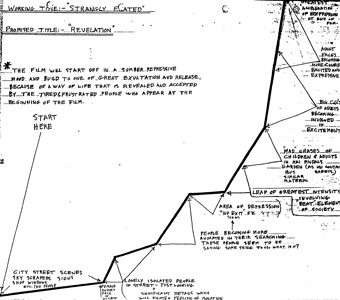
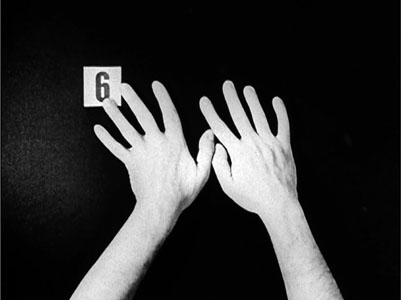
ABOUT TIME
Arthur Lipsett retrospective
Introduced by curator and filmmaker Brett Kashmere
Canadian filmmaker Arthur Lipsett (1936-1986) is a key figure in post-war avant-garde cinema. Through his kaleidoscopic collages of “found” images and sounds, he configures his reluctant vision of the ‘condition humaine’ – a view of the world scarred by the alienating effects of science and technology. The juxtaposition of divergent pieces of socio-political history and popular culture of the 20th century unfolds itself as a symbolic representation of the collective (sub) conscience of Western society.
20:00 LOST & FOUND
This program brings together Arthur Lipsett’s first, and better known, five films, produced at the National Film Board of Canada across the 1960’s. His stimulating collage strategies, associating image and sound in both ironic and ambiguous ways, would become a source of inspiration for filmmakers such as Stanley Kubrick, George Lucas and Stan Brakhage.
Very Nice, Very Nice
1961, 16mm, b&w, sound, 7’
Lipsett’s first film received an Academy Award nomination in 1962. A collage of sounds and images, found as well as shot by Lipsett himself, which reads as a sardonic interpretation of 1950’s consumerism, mass media and popular culture, punctuating the often over-looked damage left by both war and technological progress.
A Trip Down Memory Lane
1965, 16mm, b&w, sound, 12’
A surrealist time capsule combining fifty years of newsreel footage, this film constitutes a brief, but explosive, tour of post-war technocracy. Lipsett’s first pure collage film, composed exclusively from stock image and sound from the National Film Board archives.
21-87
1964, 16mm, b&w, sound, 10’
A wry comment on a machine-dominated society, filled with dystopian symbolism. This film conveys Lipsett’s concern for an increasingly de-humanized civilization, foreshadowing his embryonic agoraphobia and subsequent withdrawal from public life. The title would be cited more than once in George Lucas’s work, serving, for example, as Princess Leia’s cell number in Star Wars.
Free Fall
1964, 16mm, b&w, sound, 9’
Using a brisk “single-framing” technique, dazzling pixilation effects, in-camera superimpositions and syncopated rhythms, Lipsett attempts to create a synesthesic experience through the intensification of image and sound. The soundtrack was intended as collaboration with composer John Cage, who withdrew from the project fearing Lipsett would attempt to control and thereby undermine the aleatory organization of audio and visuals.
Fluxes
1968, 16mm, b&w, sound, 24’
Lipsett completed this film during a period of declining institutional support and increased psychological stress, which would result in more pessimistic, diffuse work. A “phantasmagoria of nothing”, based on a series of creative frictions between military motif, religious rhetoric, newsreel footage and obscure science fiction film dialogues.
** 65’, prints courtesy National Film Board of Canada
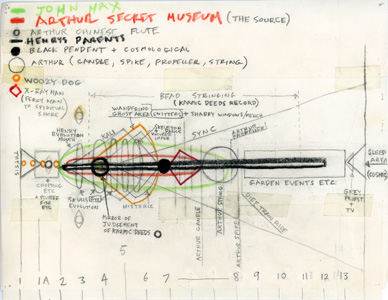
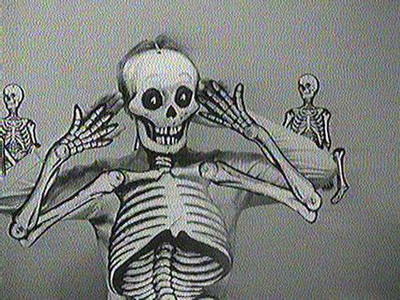
22:30 HEAVY MAGIC IS COMING
Two seldom screened works from Arthur Lipsett’s late-career, closer to the Beat ethos of previous decades than to the acerbic collage style that made him famous. The title of the program is borrowed from the fragmentary notes and diagrams that Lipsett made for Strange Codes, evincing his debilitating paranoia and isolation, as well as an urgent faith in magic.
N-Zone
1970, 16mm, b&w, sound, 43’
Lipsett’s most personal film and a departure from his associative montage style. Found images are alternated with scenes of Lipsett and his friends alone and in casual conversation, enacting an unspoken confrontation between unbridled individuality and social conformity. Whereas his older works shaped the dull remains of documentary outtakes into a razor-sharp satire of Cold War suspicion, repression and nuclear escalation, N-Zone documents a private quest for spiritual transcendence.
Strange Codes
1972, 16mm, b&w, sound, 23’
Lipsett’s last completed project is both a riddle and “an index to his other films”. The artist’s apartment becomes the stage for a disjunctive, live-action self-portrait, intensified with numerous costume changes, masks, constructed props and sets, as well as references to his earlier films. The result is a looping concoction of serious play and light mysticism.
** 70’, prints courtesy National Film Board of Canada & La Cinémathèque québécoise
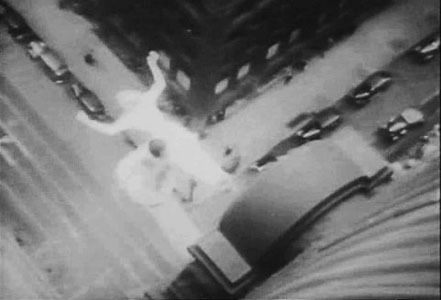
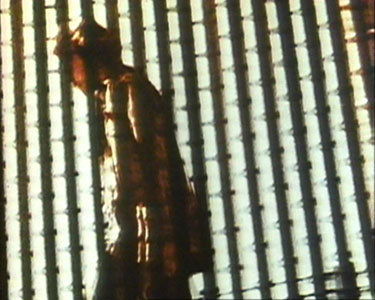
DE/CODING
Poetics of Collage
A series of films in which found footage – submitted to various realignments, interruptions and interpolations – has been reorganized in a poetical form. How can putting together fragments of the world create new meanings, new ways of thinking, looking and listening? For what purposes were these images originally created and constructed, and what new vitality, force and desire might erupt by deconstructing them? How to connect elements distant in time and space, in an attempt to take a grasp on the world we live in, dig below and behind the surface, in search of the unspoken, the suppressed, the innate?
20:00
Abigail Child
Surface Noise
2000, 16mm, colour, sound, 18’
Abigail Child’s complex audiovisual sonatas investigate, interrogate and interpret contemporary social realities; mainly the construction of gender identity and behaviour in public and private spaces. Deploying a number of strategies – vertical montage, asymptotic convergence, sound and noise juxtapositions – she recycles meaning out of the informational chaos and dismantles predetermined notions and narratives, drawing the attention to what happens in the margins, the gazes, poses and gestures we ourselves are hardly aware of. The sound montage was created in collaboration with New York musicians Zeena Parkins, Christian Marclay, Shelley Hirsch and Jim Black.
Alan Berliner
Everywhere at once
1985, 16mm, colour, sound, 10’
A musical montage, a synchronised symphony composed from an infinity of elements taken from Berliner’s own personal archive of cultural artefacts and residues: piano cords and cable cars, cocktail jazz and broken glass, loony tunes and telephones, elephants and xylophones, violins and vultures, orchestras and roller coasters… A journey in images at the rhythm of sound. With this sort of “bricolage”, Berliner attempts to bridge a wide range of poetic horizons: the actual with the possible, pre-history with science fiction, magic with science fact, the medium with the message.
Frank & Caroline Mouris
Frank Film
1973, 35mm, colour, sound, 9’
Frank Mouris’s animated autobiography composed of more than 11.000 images collected from magazines and catalogues, which shift and mutate across the screen as Mouris recites a list of words beginning with the letter ‘f’. The words bounce off the images and generate an associative flow of memories, which Mouris recounts on a second track, interwoven with the recitation. The result is an obsessive and mesmerizing collage, which film critic Andrew Sarris described as “a nine-minute evocation or America’s exhilarating everythingness”. This film won the Academy Award for Best Animated Short Film in 1973.
Bruce Conner
A Movie
1958, 16mm, b&w, sound, 12’
The debut film of Bruce Conner, recently deceased, and an undeniable cornerstone in the art of collage filmmaking. Inspired by the surrealist poetry of zapping, the aesthetics of film trailers and the use of archive material in the Marx Brothers comedy Duck Soup, Conner spent many years working in what he would call a “universal film”, the world reflected in a compendium of symbolic images from newsreel, fiction films, educational material and softcore porno. As Patricia Mellencamp has pointed out, it’s “a history of cinema as catastophe” that “becomes the history of Western culture or the United States – a history of colonial conquest by technology, resolutely linking, sex, death, and cinema – questioning our very desire for cinema.”
Chick Strand
Loose Ends
1979, 16mm, b&w, sound, 25’
A collage film about the process of internalizing the information that bombards us through a combination of personal experience and media in all forms. These fragmented images of life, sometimes shared by all, sometimes isolated and obscure, but with common threads, speed through our senses in large numbers and complicated mixtures of fantasy, dream and reality. Chick Strand leads us to a state of psychological entropy tending toward a uniform inertness … an insensitive lack of involvement in the ‘condition humaine’ and our own humanity.
William Farley
Tribute
1986, 16mm, b&w, sound, 7’
An affirmative vision of life and death, in memory of the artist’s brother, built entirely out of archive images from the 1950’s and 1960’s – a ship launching, a tree falling, a woman dancing, …, impersonal subjects that become icons and metaphors for our most personal thoughts. Image after image emerge from darkness, reminding us of the purity and conflict that are always part of our collective experience of existence. The Music is by David Byrne.
** 81’
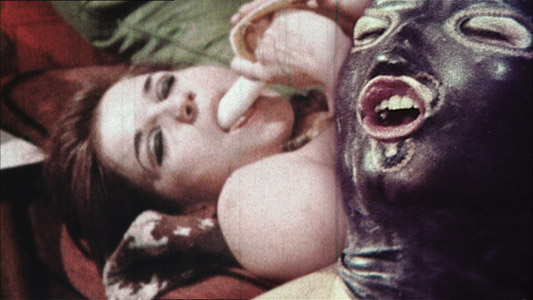
22:30
Simon Pummell
Bodysong
2003, 35mm, colour, sound, 83’
Simon Pummell’s first feature film is an epic story of love, sex, violence, death and dreams: the story of human life, told by means of an impressive collage of images from around the world and across 100 years of cinema history. A seemingly endless succession of fragments of silent films, newsreels, documentaries and home movies serves as a meditation on the micro and macroscopical order of people’s lives. The hypnotic soundtrack is by Radiohead’s Jonny Greenwood. An interactive version of this work is available on www.bodysong.com.
** 83’
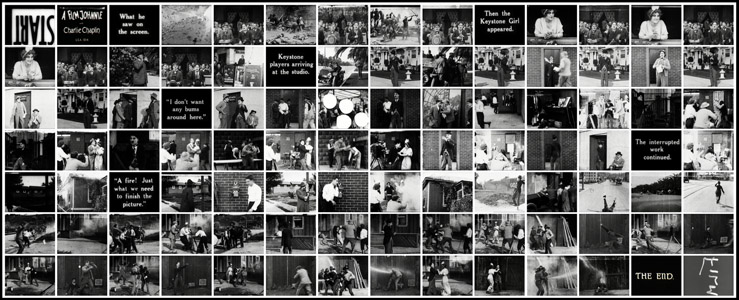
DIS/ORDER
On Axioms and Images
A series of films that explore the conceptual space of “compilation films” at the same time that they question the conventional ordering principles of montage. How does meaning result from a linear organization of images? Is there such a thing as a logic of chance? Does every random succession of film bits imply a unity, an order within chaos, a secret route to the imagination? Is narrative, as Hollis Frampton suggested in his so-called “Brakhage’s theorem”, a fixed axiom in cinema? : “For any finite series of shots (‘film’) whatsoever there exists in real time a rational narrative, such that every term in the series, together with its position, duration, partition and reference shall be perfectly and entirely accounted for”.
20:00
Thom Andersen & Malcolm Brodwick
— ——-
1966-67, 16mm, colour, sound, 11’
Images from the rock ’n’ roll world of the 1960’s, organized according to a predetermined structure. A sequence of picture-sound equations with randomly chosen terms: vertically, it is completely structured, horizontally, it is completely random. « A pastiche of cinematography, a parody of montage ». With this film Thom Andersen demonstrates the power of a rule as a constructing principle, thus undermining the conventional codes of montage and documentary filmmaking. The result is a stimulating mosaic that ignores the urge for representation and topic information, but instead, as crystallization of an era, tends towards the functioning of the human memory.
Morgan Fisher
( )
2003, 16mm, colour/b&w, silent, 21’
A film that originates in Morgan Fisher’s fascination with inserts: close-ups of newspaper headlines, letters and similar sorts of significant details that have to be included for the sake of clarity in narrative films, indispensable and marginal at the same time. With () – the title is a reference to — ——- by Thom Andersen and Malcolm Brodwick – Fisher has made a film entirely composed of inserts, as a way of making them visible and releasing them from their ungrateful instrumental role. The shots, extracted from a variety of films, were organized according to an arbitrary (and never explained) rule. Freed from their servitude to stories, the inserts are given a new freedom, as components of a fictitious array, an organizational model that attempts to escape the linearity of cinema: like an arrangement in space, which is scanned in time.
Norbert Pfaffenbichler
Mosaik Mécanique
2007, 35mm, b/w, sound, 9’30”
The third part of Pfaffenbichler’s ‘Notes on Film’ series, which borrows its title from a combination of Fernand Leger’s Ballet Mecanique and Peter Kubelka’s Mosaik in Vertrauen. All the shots of the slapstick comedy A Film Johnnie (USA, 1914) are shown simultaneously in a symmetrical grid, one after the other. Each scene, from one cut to the next, from the first to the last frame, is looped. Spatialization takes the place of temporality, synchronism that of chronology. A polyrhythmic kaleidoscope is produced as a result (reflected in Bernhard Lang’s music), tearing the audience back and forth between an analytic way of seeing rhythmic patterns and the impulse to (re)construct a plot.
Christoph Girardet
Random Cuts
1993, video, colour, sound, 3’20”
This video work is composed of 12 film clips, each 1.6 seconds long, cut and mounted according to a certain mathematical principle. The images show “cuts” of a cockfight, a samurai duel, a cartoon battle – signs of aggression, which simply flashed up in the original material, gradually reveal their violent content. As the segments unfold in 12 consecutive phases, a certain logic is formed. Everything is assigned its place, and order is re-established.
Lenka Clayton
Qaeda Quality Question Quickly Quickly Quiet
2002, video, colour, sound, 20’
Lenka Clayton’s work is an exploration and interrogation of the “natural” order of things. Using organising systems and interventions to disrupt accepted modes of language and behaviour, she questions the authority of all forms of documentation as a referent of the original events. The concept for this ‘mash up’ video is a simple one: Clayton took the 4100 words from George W. Bush’s infamous ‘Axis of Evil’ speech and edited them in alphabetical order. The result is a powerful dissection of the posturing, rhetoric and obsessions dominating the post 9/11 American politics.
** 65’
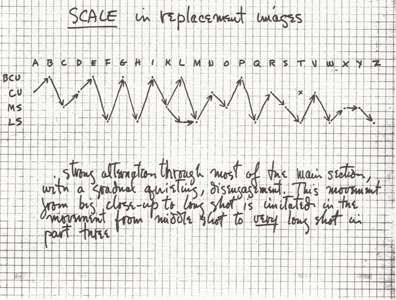
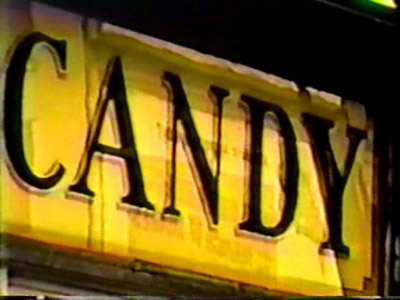
22:30
Hollis Frampton
Zorns Lemma
1970, 16mm, colour, sound, 60’
Zorns Lemma is arguably the veritable master piece of American filmmaker Hollis Frampton. It combines a number of intellectual and aesthetic issues that Frampton had already explored in his earlier films and photographic work, especially his fascination with epistemology and set theory – the title is a reference to mathematician Max Zorn’s equivalent to the Axiom of Choice. The film is structured according to an axiomatic system, expressed both in ontological and structural codes. The central part consists of images of words, assembled in alphabetical order – a reference to the Encyclopedic movement and the arbitrary tendency to categorize the World on the basis of the first letter of the object name. The ideograms gradually make place for arbitrary images, as a result of which an ingenious game between language and image is installed, inciting the audience to dismantle the control structures and discover the logic of chance.
** 60’
Thanks to : Brett Kashmere, the National Film Board of Canada, the Belgian Royale Film Archive, Mike Sperlinger & Benjamin Cook (LUX), Christophe Bichon (Lightcone), Lauren Sorensen (Canyon), Michaela Grill (Sixpack), Tessa Williams (Pathé UK), Ann Schepens (A-film), Janine Marmot (Hot Property Films), Morgan Fisher, Simon Pummell, Frank & Caroline Mouris, Abigail Child, William Farley, Edwin Carels, Pieter-Paul Mortier (STUK), Dirk Deblauwe (Courtisane).